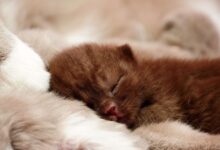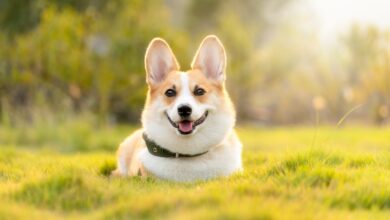
Dogs, often referred to as “man’s best friend,” have a remarkable ability to communicate with us and other dogs through body language. This silent form of communication is vital for building trust, preventing misunderstandings, and ensuring the well-being of your furry companion. In this comprehensive guide, we’ll delve into the fascinating world of canine body language, from the meaning behind tail wagging to the significance of ear positioning, enabling you to decipher the messages your dog is conveying.
The Significance of Canine Body Language
A Silent Language
Dogs are known for their loyalty, companionship, and their unique way of expressing themselves non-verbally. They primarily communicate through body language, employing a diverse range of physical cues to convey their emotions, intentions, and needs. By mastering the art of interpreting these signals, you can respond appropriately to your dog, nurturing a deeper bond and ensuring their emotional well-being.
Building Trust
Understanding your dog’s body language is foundational for building trust. When your dog senses that you comprehend their feelings and can respond accordingly, they are more likely to trust your guidance. This trust is essential for a harmonious and secure relationship with your four-legged friend.
Preventing Misunderstandings
Misinterpreting your dog’s body language can lead to misunderstandings and, in some cases, even accidents. By accurately decoding their signals, you can navigate your interactions effectively and avoid potentially stressful or dangerous situations.
Decoding Common Canine Body Language Signals
Happiness
- Relaxed Body: A content and happy dog will exhibit a relaxed body posture. There should be no visible signs of tension or stiffness. Their muscles are loose, and they appear comfortable in their surroundings.
- Wagging Tail: Perhaps the most iconic sign of canine joy is a wagging tail. When your dog’s tail wags with a loose, broad movement, it’s often an indicator of sheer delight. However, it’s important to note that not all tail wags indicate happiness; context matters.
- Playfulness: Dogs at play display exaggerated movements. You’ll observe bounding leaps, exaggerated bows, and playful pouncing as they interact with their canine companions or engage in games with you.
Fear or Anxiety
- Cowering: A fearful or anxious dog will often cower or lower their body, trying to make themselves appear smaller and less threatening. This is a self-protective response when they perceive a potential threat.
- Tucked Tail: A classic sign of fear is when your dog tucks their tail between their legs. This is an attempt to shield their vulnerable underside and genital area from potential harm.
- Yawning or Lip Licking: Dogs may yawn excessively or lick their lips when stressed or anxious. These behaviors help alleviate stress and can be indicators of discomfort.
Aggression or Dominance
- Stiffness: An aggressive dog typically stiffens their body. You may notice that their muscles become tense, and they stand erect. Raised hackles, the fur along their back, can also be a visible sign of aggression.
- Direct Eye Contact: Intense, prolonged eye contact can signal dominance or aggression in dogs. It’s akin to a challenge, where one dog asserts their dominance over another.
- Growling or Baring Teeth: Growling and baring teeth are clear signs of aggression or severe discomfort. These behaviors are your dog’s way of communicating that they feel threatened and may resort to defensive measures.
Submission
- Lowering Body: A submissive dog demonstrates their submission by lowering their body and posture. They may appear to crouch or hunch down, avoiding direct eye contact as a sign of respect or deference.
- Exposing Belly: Rolling over to expose the belly is another submissive gesture. It signifies trust in you and a willingness to be vulnerable, as the belly is a particularly sensitive area.
- Tail Tucking: Similar to fear, a tucked tail can indicate submission. In this context, the dog is signaling that they are not a threat and are yielding to a perceived authority.
Specific Canine Body Language Signs
Tail Wagging
Tail wagging is one of the most recognizable canine body language signals. While it often signifies happiness and excitement, it’s essential to consider the nuances of the wag.
- Broad and Loose Wag: A broad, loose tail wag, often with the entire rear end moving, typically indicates a happy and friendly disposition. Your dog is genuinely delighted.
- Slow Wag with Stiffness: A slow tail wag accompanied by body stiffness may indicate uncertainty or fear. Your dog is unsure about the situation and may be on guard.
- Stiff and Rapid Wag: A stiff, rapid wag, especially if the tail is held high, can be a sign of agitation or even aggression. This type of wag suggests that your dog is not in a friendly mood.
Barking and Growling
Vocalizations are another aspect of canine communication that complements body language. While barking and growling can convey various messages, they often indicate emotional states.
- Barking: Dogs bark for a variety of reasons, including alertness, playfulness, or even boredom. Context and accompanying body language can help you discern the underlying message.
- Growling: Growling typically signifies discomfort, whether it’s due to pain, fear, or a need for space. It’s a warning signal that indicates your dog’s emotional state.
Ears
Ears play a crucial role in conveying your dog’s mood, and their positioning can provide insights into their emotional state.
- Ears Forward: When your dog’s ears are held forward and slightly tilted, they are usually displaying alertness or interest. They are paying close attention to something that has caught their notice.
- Ears Pinned Back: Ears pinned back against the head can signify fear or submission. This is a way for your dog to make themselves appear less threatening.
How to Tell If Your Dog Is in Pain
Recognizing pain in your dog is critical for their well-being, as they may not always vocalize their discomfort. Here are some signs to watch for:
- Whining: Whining or whimpering is often an indicator of pain or discomfort. If your dog suddenly starts whining and you can’t identify the cause, it’s best to consult your veterinarian.
- Restlessness: If your dog appears unusually restless, frequently changing positions, it could be due to pain. They may be trying to find a more comfortable position.
- Panting: Excessive panting when your dog isn’t hot or hasn’t been physically active can be a sign of pain or distress.
- Reluctance to Move: If your dog seems hesitant to move or is favoring one limb, it may indicate pain in that area.
- Sensitivity to Touch: If your dog reacts negatively to being touched or exhibits a heightened sensitivity to touch in a particular area, it’s a potential sign of pain.
Canine Body Language
Understanding canine body language is a valuable skill for any dog owner. It not only enriches the relationship between you and your dog but also helps you respond appropriately to their needs and emotional states. Keep in mind that while the general principles of body language apply to most dogs, individual dogs may have unique signals and quirks. Therefore, getting to know your dog’s specific body language cues is an ongoing process that deepens your connection over time. By investing time and effort in understanding your dog’s silent language, you’ll be better equipped to provide the care, comfort, and companionship that your furry friend deserves.








